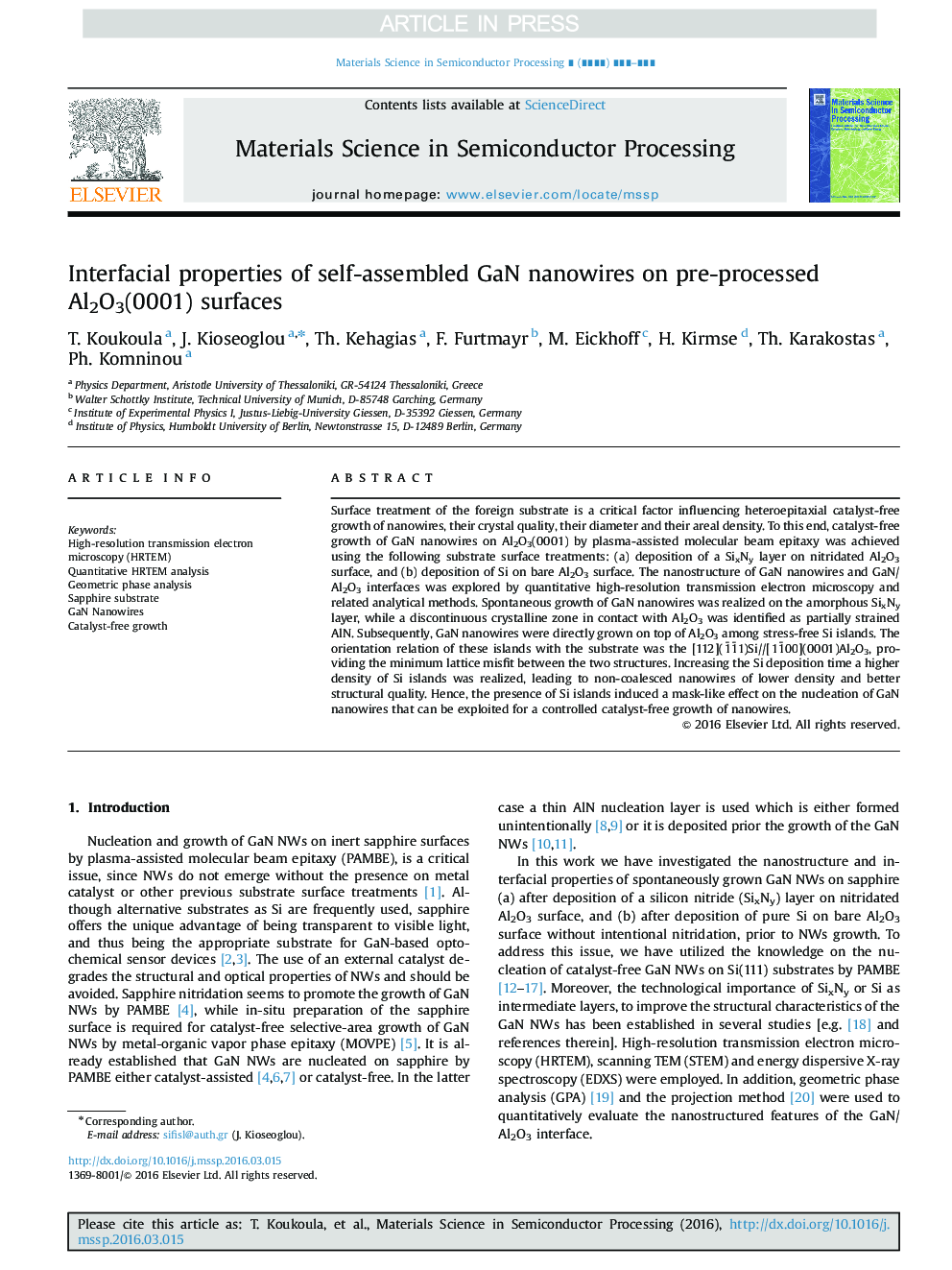| Article ID | Journal | Published Year | Pages | File Type |
|---|---|---|---|---|
| 5006271 | Materials Science in Semiconductor Processing | 2016 | 5 Pages |
Abstract
Surface treatment of the foreign substrate is a critical factor influencing heteroepitaxial catalyst-free growth of nanowires, their crystal quality, their diameter and their areal density. To this end, catalyst-free growth of GaN nanowires on Al2O3(0001) by plasma-assisted molecular beam epitaxy was achieved using the following substrate surface treatments: (a) deposition of a SixNy layer on nitridated Al2O3 surface, and (b) deposition of Si on bare Al2O3 surface. The nanostructure of GaN nanowires and GaN/Al2O3 interfaces was explored by quantitative high-resolution transmission electron microscopy and related analytical methods. Spontaneous growth of GaN nanowires was realized on the amorphous SixNy layer, while a discontinuous crystalline zone in contact with Al2O3 was identified as partially strained AlN. Subsequently, GaN nanowires were directly grown on top of Al2O3 among stress-free Si islands. The orientation relation of these islands with the substrate was the [112](1¯1¯1)Si//[11¯00](0001)Al2O3, providing the minimum lattice misfit between the two structures. Increasing the Si deposition time a higher density of Si islands was realized, leading to non-coalesced nanowires of lower density and better structural quality. Hence, the presence of Si islands induced a mask-like effect on the nucleation of GaN nanowires that can be exploited for a controlled catalyst-free growth of nanowires.
Keywords
Related Topics
Physical Sciences and Engineering
Engineering
Electrical and Electronic Engineering
Authors
T. Koukoula, J. Kioseoglou, Th. Kehagias, F. Furtmayr, M. Eickhoff, H. Kirmse, Th. Karakostas, Ph. Komninou,
